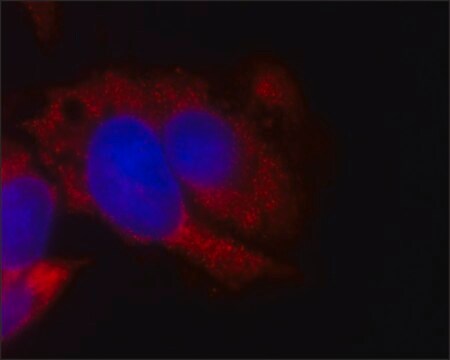推薦產品
生物源
rabbit
共軛
unconjugated
抗體表格
affinity isolated antibody
抗體產品種類
primary antibodies
無性繁殖
polyclonal
形狀
buffered aqueous solution
分子量
antigen ~80 kDa
物種活性
human, mouse, rat
加強驗證
functional assay
Learn more about Antibody Enhanced Validation
濃度
~1.0 mg/mL
技術
immunoprecipitation (IP): 5-10 μg using HEK-293T cells lysate
indirect immunofluorescence: 2-5 μg/mL using methanol-acetone fixed heat-shocked NIH3T3 cells
western blot: 1-2 μg/mL using HEK-293T cell lysate
western blot: 2-4 μg/mL using RAT1 cell lysate
UniProt登錄號
運輸包裝
dry ice
儲存溫度
−20°C
目標翻譯後修改
unmodified
基因資訊
human ... FMR1(2332)
mouse ... Fmr1(14265)
rat ... Fmr1(24948)
一般說明
免疫原
應用
外觀
免責聲明
未找到適合的產品?
試用我們的產品選擇工具.
儲存類別代碼
10 - Combustible liquids
閃點(°F)
Not applicable
閃點(°C)
Not applicable
個人防護裝備
Eyeshields, Gloves, multi-purpose combination respirator cartridge (US)
分析證明 (COA)
輸入產品批次/批號來搜索 分析證明 (COA)。在產品’s標籤上找到批次和批號,寫有 ‘Lot’或‘Batch’.。
我們的科學家團隊在所有研究領域都有豐富的經驗,包括生命科學、材料科學、化學合成、色譜、分析等.
聯絡技術服務








